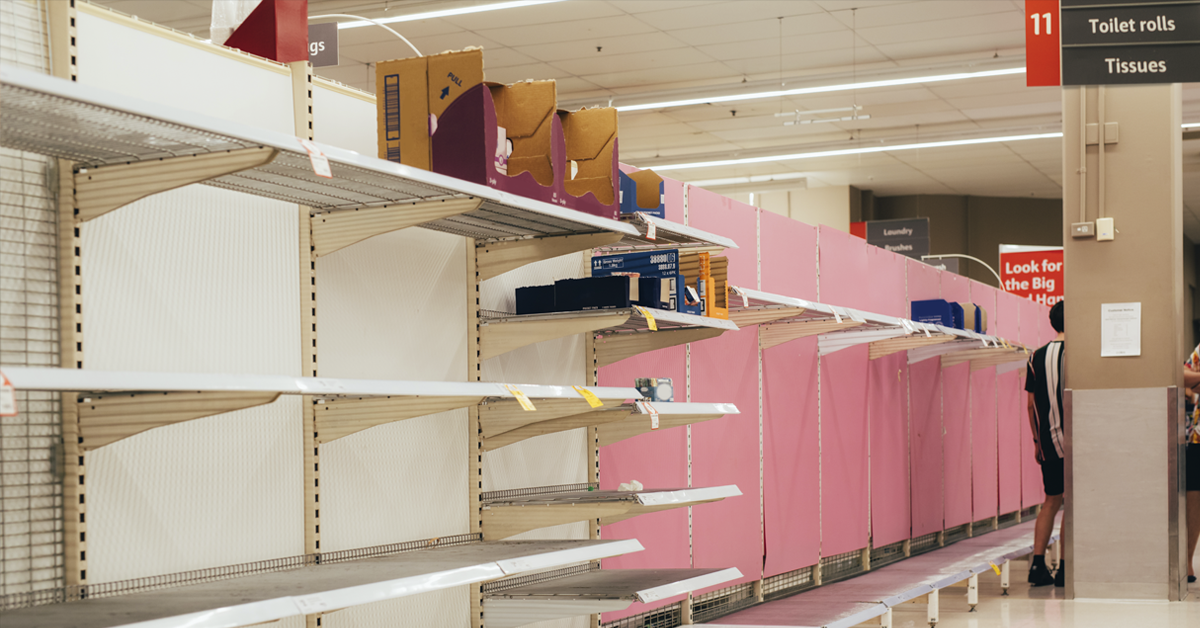When severe acute respiratory syndrome (SARS), the last coronavirus outbreak, hit China in 2002, the global economy remained relatively healthy. The SARS epidemic led to about 8,000 cases globally and affected 26 countries. At the time, the GDP of China represented 4.31 percent of the world GDP.
By contrast, COVID-19 currently has over 1.2 million confirmed cases—more than 300,000 of which are in the United States—with infections in at least 174 other countries. China now represents about 16 percent of the world GDP, a nearly four-fold increase since SARS.
With 81 percent of companies relying on Chinese suppliers—and more factories in Europe and the US closing—sudden disruptions to the global economy and supply chains have hobbled our ability to get the products we need.
“It is truly unprecedented,” says Ayman Omar, associate professor of technology and analytics at American University’s Kogod School of Business. “There are typically supply chain disruptions, yes, but it’s never happened at this scale and scope, at the same time, across every single country.”
Omar, who holds a PhD in supply chain management and logistics, describes the current situation as “the perfect storm,” with many factors working against supply chains’ and stores’ ability to meet spiking demand from consumers who are buying in bulk and stockpiling for quarantines (think “panic buying”). At the same time, supply is decreasing. And transportation, which connects supply with demand, is slowing down, with capacity cuts of up to 100 percent for some companies.
These factors drastically limit manufacturers’, suppliers’, and distributors’ options to produce, ship, and restock—a serious issue for supply chains, which largely depend on this intricate, interdependent network.
One way to “address these gaps,” Omar says, is by reassigning production capabilities to facilities that can produce. This is especially important for quickly producing essential products, like medical equipment that could save lives. We already see this with automobile manufacturers, like General Motors, Ford, and Tesla, that are making ventilators for hospitals, or clothing manufacturers, like Los Angeles’s Lucky Brand, that are producing face masks.
“The key here is to adapt in the short term, but in the long term, it’s all about building supply chain resilience through the ability to adjust to disruptions,” explains Omar.
Companies that are at the top of the market, like Amazon or Walmart, can also help. They are much more adept at producing and distributing effectively because their supply chains are so strong, Omar says. Walmart’s response to Hurricane Katrina in 2005 is a prime example: the company provided $17 million in cash donations and $3 million worth of merchandise to help with disaster relief throughout Mississippi, Louisiana, and Texas.
“Their products don’t make them unique,” says Omar. “It’s their [robust] supply chains and the services they can offer. Other organizations in the public and private sector need to start planning for building capabilities like resilience into their supply chains in order to be ready for the next disruption. It’s not a matter of if it will take place but when.”
What we aren’t able to do very effectively, though, is rapidly track and trace products. With our baseline of current technology, we can’t always quickly access the data we need to make effective decisions within supply chains.
“If we need a lot of pallets or a piece of equipment in New York, and Texas has an extra supply, we can start reshuffling that, if needed,” explains Omar. “But that can’t happen unless we can get an overall sense of what ports exist where and make decisions accordingly.”
Omar says blockchain, used in combination with other emerging technologies, is one solution. Blockchain, known best for its use as the underlying technology for cryptocurrencies, is built on a synchronized database called a “distributed ledger.” It stores digital information in multiple locations and updates it instantly and securely—a potentially life-saving capability for disaster relief.
In “Blockchain: How Increasing Trust, Efficiency, and Transparency Can Save Lives,” Omar explains how blockchain can revolutionize emergency response, especially within the Federal Emergency Management Agency (FEMA), through monitoring, tracking, and paying for supplies; streamlining how to identify available beds, supplies, and medical care; and creating a secure donation system with internal audits to prevent fraud.
“It’s not just the ability to act. It’s the ability to act in the most timely and efficient manner,” says Omar.
Moving forward, Omar predicts we may also see companies transitioning to automation or user robotics. For some industries, this could be a way to mitigate future risks and solve disruptions in the supply chain. “One good thing that can come from this is that we’ll have to become much more creative with how we mitigate disruptions,” Omar says. “It doesn’t have to be substituting workers with technology that helps us. It could be restructuring our supply chains, companies having more production that’s closer to their own markets.”
In the meantime, there are a few things we can do. People can rationalize their purchases, making sure they are not buying excessively out of fear or anxiety. In some cases, businesses can team up with competition to share supplies and collaborate on distribution. Most importantly, though, we can stay home.
The longer this pandemic extends, the worse off we’ll be, says Omar. Opening the economy back up again has to correlate with a lower and declining number of cases. And the more we pretend this isn’t happening or it’s not a serious issue, the longer it will take us to recover.
“We can’t start working again just because we need the supplies,” says Omar. “In reality, if people keep getting sick, how can we expect to produce, sell, or ship products?
“The more people who are cautious and make sure they and others are safe, the faster we get through this, and the quicker supply chains will be back online.”
Kogod professor Ayman Omar explains why products are in short supply and why sending people back to work won’t help.
